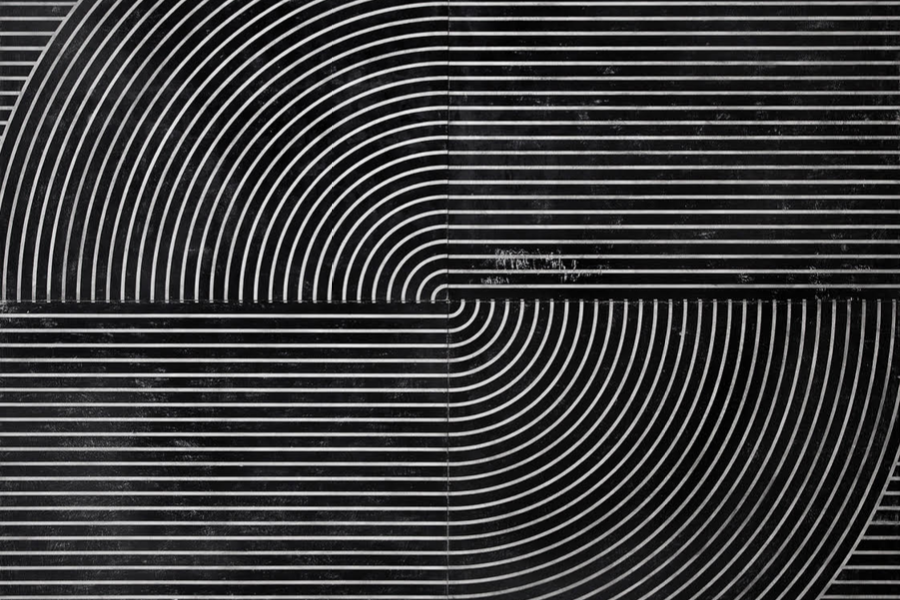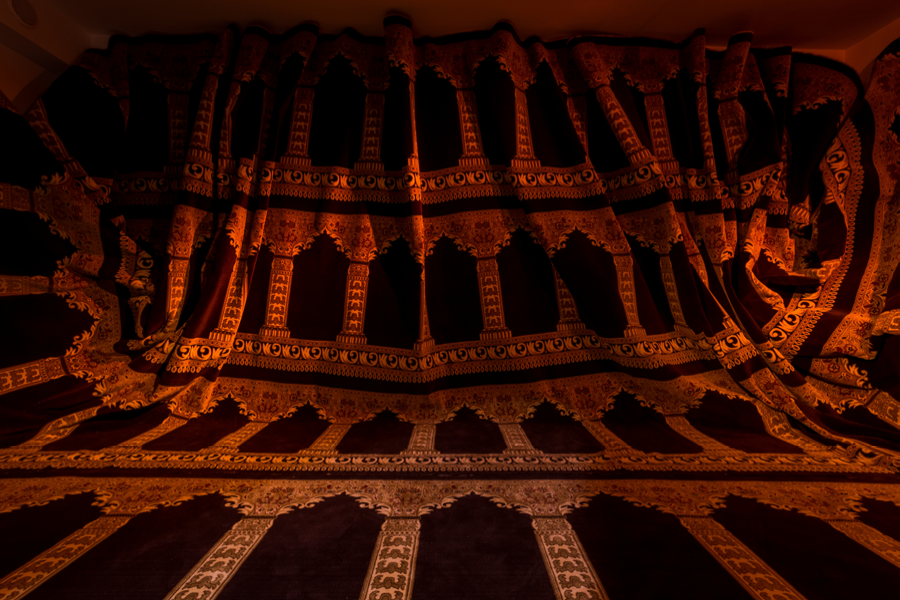
Today’s Galleries : Places of worship
Should one practice the religion one builds for? What can the architect bring to building of sacred spaces other than what is taught by the priest the imam, the rabbi, or the pastor ? Churches, but also mosques, temples, and synagogues ... In its 442nd issue, AA has chosen to explore contemporary places of worship, which make master builders of their architecs.
In order to nourish this reflection, the AA editorial staff invited three galleries to select a work by a visual artist or architect that they represent, expressing their vision of “Places of worship”. Responded to the invitation: the Cardi Gallery in Milan, the gallery De Sarthe in Hong Kong and the gallery Six Elzévir in Paris.

DAVIDE BALLIANO, UNTITLED_7141, 2015
represented by the Cardi Gallery
“I think that my research lately seems to be focused on the power struggle between labor as human identity and the ferocious efficacy of technology, passing through time and its perception and ending with the contemplation of the sublime.”
Contemporary artist Davide Balliano was born in Turin in 1983 and relocated to New York City in 2006 where he is currently lives and works. Within his artistic practice, the artist’s works exist in between the thin distinction of painting and sculpture. Initially specialising in photography the artist transitioned his focus within the last decade onto painting and sculpture, generating a significant body of work that has been exhibited in renowned galleries and exhibitions worldwide.
Balliano’s characteristic minimal and geometric visual language finds striking results in the black and white surfaces that radiate a crispy perfection through the dynamic geometric composition of line and form. Looking closely, they reveal small imperfections, scratches, and scrapes within the plaster and gesso application on wood, transforming the seemingly austere surface into a highly textured work that introduces a sculptural element to the work. Interested in references drawing from a myriad of research fields such as the meaning of the iconised monument, architecture and nature, Balliano’s body of work is the result of an ongoing confrontation with scientific and emotive concepts concerning the individual’s relationship with the macrocosm.
The present work “UNTITLED_7141″ is an extraordinary example of the striking potential that Balliano’s minimalistic paintings carry. By removing any unnecessary abstraction or figurative lecture visible in the work, the artist unlocks the highly charged possibility of activating the surrounding space through equilibrium between absence and presence.
The Cardi Gallery was founded in Milan, Italy in April 1972 by Renato Cardi. Originally named ‘Galleria Cardi ‘ the gallery focused on fostering the work of contemporary Italian artists. Over the subsequent years Renato built a distinguished collection that spanned from Arte Povera to Spatialism. Now led by Renato’s son Nicolo, the Cardi Gallery continues to shape the cultural landscape in Milan and abroad. In 2015, the Cardi Gallery opened its first overseas venue, expanding its presence to London’s Mayfair district.

XIN YUNPEG, 144m2, 2017
represented by the gallery de Sarthe
For 144m2, Xin Yunpeng references his Islamic Hui roots by layering a large Islamic style carpet for Salah onto a room of the gallery. The carpet not only lies on the floor but also runs across the walls. As the carpet is too big for the space, it completely engulfs the room. Xin plays again with questions of space and borders. The carpet’s design also hints at another interpretation: patterned across the carpet is a series of doors that traditionally dictated the position of prayer towards Mecca and the Kaaba. However, upon entering this room, the viewer becomes disorientated and loses the sense of spatiality that the carpet usually provides. This spatial confusion directs the viewer to the artist’s ruminations on the propensity of spaces and borders, both physical and nonphysical, dictating our behavior and fostering interpersonal difference.
de Sarthe was founded in Paris in 1977, later establishing galleries in America (1981) and most recently in Hong Kong (2010) and Beijing (2014). In 2017 the gallery opened a new space in Hong Kong’s South Side art district, Wong Chuk Hang, to expand its program of contemporary art from Asia. In the Hong Kong space 90% of the exhibitions are dedicated to showing contemporary art from Asia.

EMMANUEL ABITEBOUL, MENADE, 2020 & MAXIME SIMON, ARCANE, 2020
in the gallery Six Elzévir
On the occasion of their first exhibition at Six elzévir, Anima, Emmanuel Abiteboul and Maxime Simon offer us an aesthetic and lyrical walk in an orchestrated microcosm.
The framework of this body of work is a juxtaposition of motifs from the sacred, the impalpable, knowledge and the spirit. The works here are not mere receptacles of technical know-how but embody mental and mystical images, often linked to our collective unconscious. They are endowed with a powerful aura, a true encounter between the object being looked at and the viewer is at work.
In Emmanuel Abiteboul’s anthropomorphic icons, the materiality of the bodies seems to offer itself to us for a short moment. Soon they will fade away, leaving only their shadows behind. These works materialise the furtive encounter between earth and sky, there and beyond. Are they apparitions or productions of the spirit? The forms recall Greek statues damaged by time or the fossilised bodies of Pompeii, yet the abstraction of the line is undeniable. This treatment allows the viewer to go beyond the physical dimension of the world with greater agility and penetrate the lair of the sacred.
In the Arcane Series, Maxime Simon combines chance with his research. It is about using randomness to try to reach a form of objectivity. Inspired by the Tarot de Marseille, each card represents an archetype defined by the artist. The iconography is inspired by different registers ranging from Greek myth, to sacred art and pop culture.
The viewer is led to reflect on these different facets of existence, he can study them individually or decide to combine them. It is a philosophical tool that allows the viewer to question his or her relationship to the world. In order to accompany the viewer in his quest, Maxime Simon will create new print systems. The viewer can contemplate the cards or decide to activate them.
The richness of this exhibition makes us want to spend more time with the works, to grasp them more and more, to feel their breaths and let them accompany us long after our visit. The impalpable anima is well and truly present and will never cease to arouse our senses and our curiosity.
Adriana Bustamante, curator of the exhibition
Created in 2010 on rue Elzévir in Paris by Patrick Rubin, architect, and Valérie de Calignon, interior designer, under the aegis of the Canal workshop, the Six Elzévir gallery is mainly oriented towards drawing but is also dedicated to installations and performances. From 30 June to 4 August, the exhibition Anima will open its doors. The opening is scheduled for 1 July 2021.
EXPLORE THE PLACES OF WORSHIP
WITH ISSUE 442 OF AA
AVAILABLE IN OUR ONLINE SHOP



